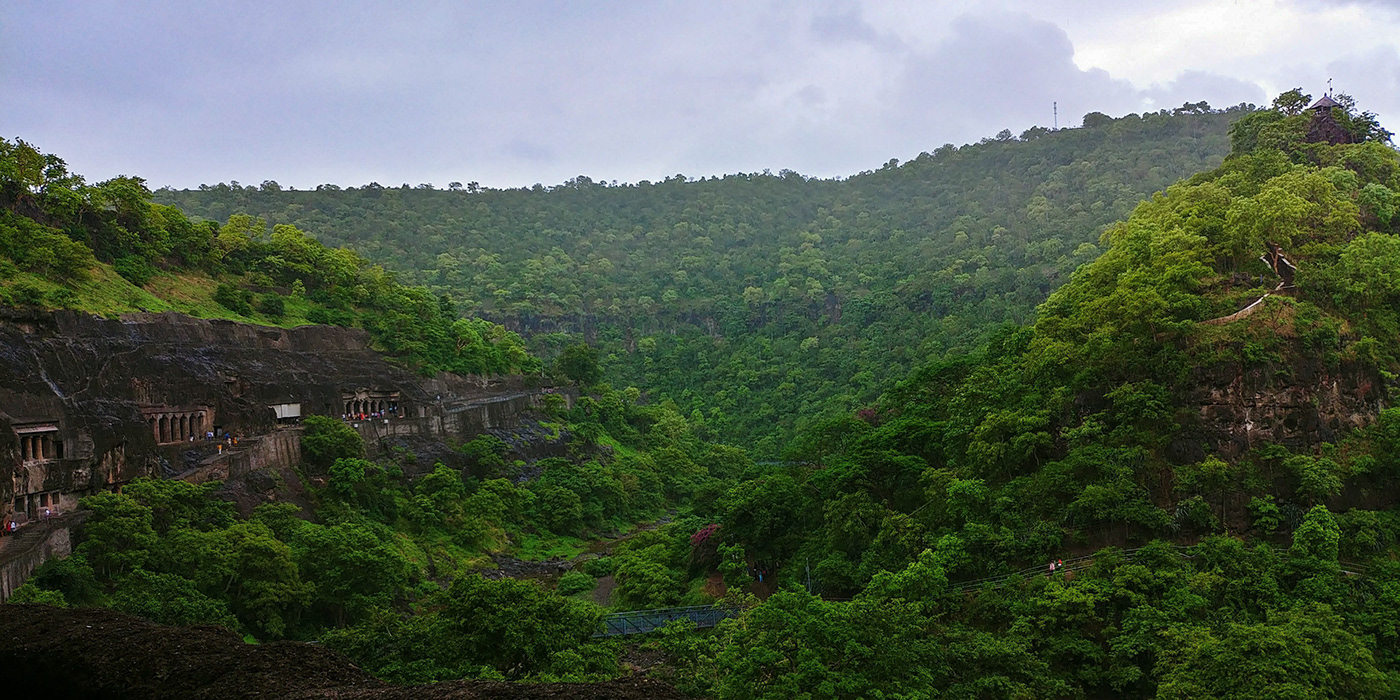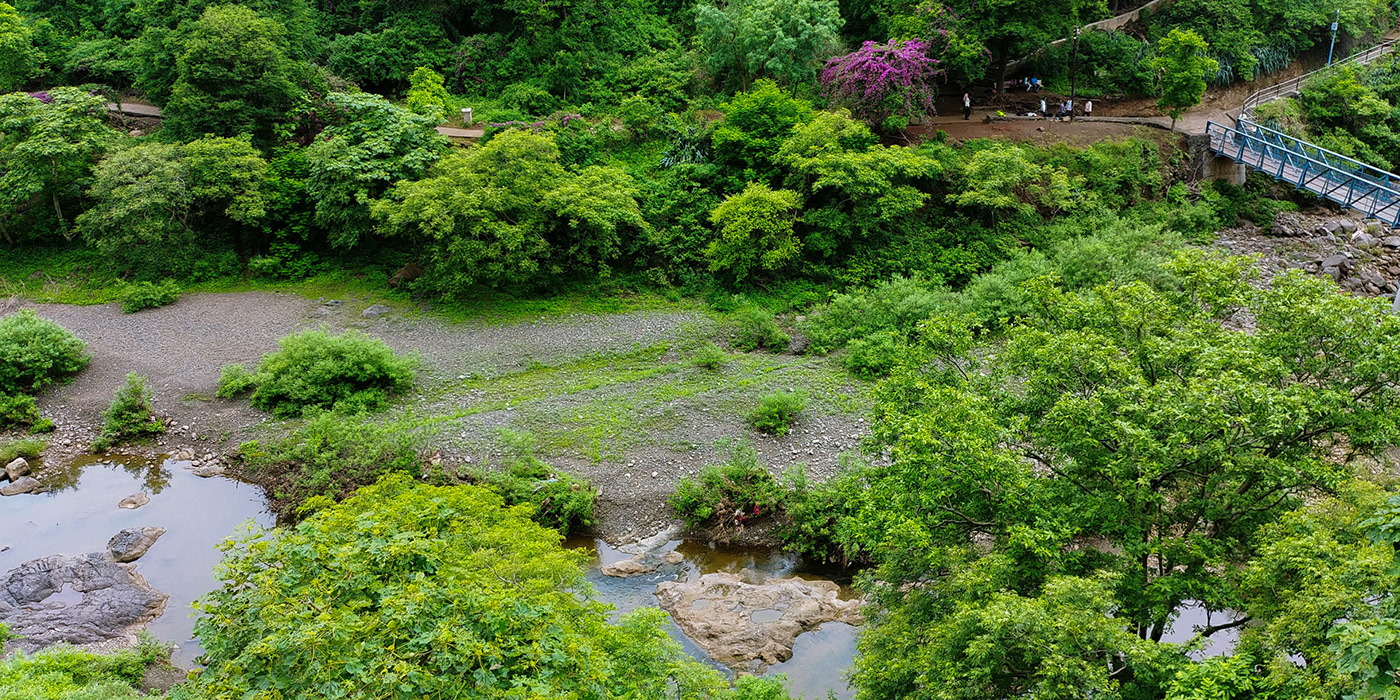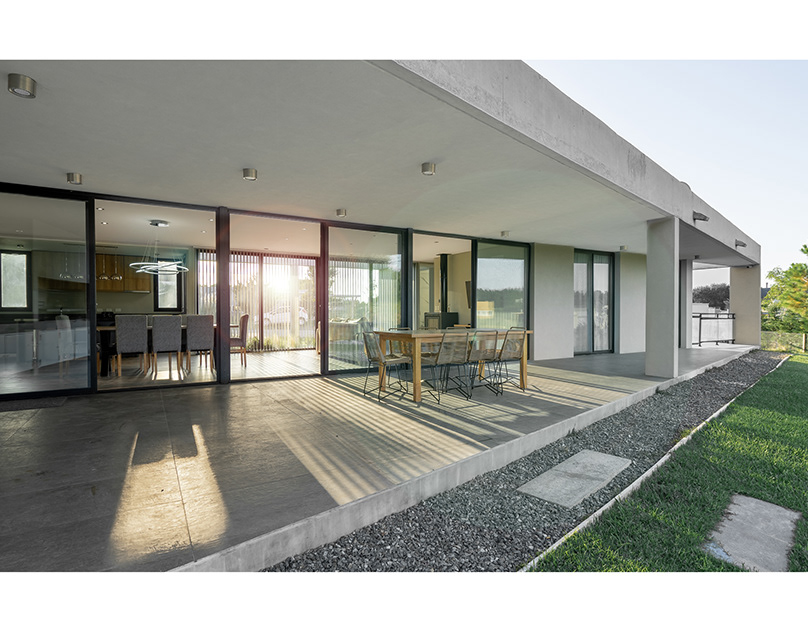ajanta

the Ajanta caves are regarded as a world heritage site, for finesse in the rock-cut sculpting and diversity in the local stories depicted in the sculptures and paintings. the older of the 30 caves were built somewhere between 3rd century BCE and 1st century CE and have paintings of scenes from the Jātaka tales - which are allegories built around the births of Lord Buddha, in both human and animal forms.
the latter caves are generally accepted to be built during the 5th century CE, with architectural influences from the then weakening Gupta dynasty. the sculptures and paintings in these latter caves are associated with the Mahāyāna tradition of Buddhism - where it is believed that a person attains Buddhahood (and become the "awakened one") for the greater good of all beings.
it is fascinating to notice how Buddhism evolved over centuries, and how this evolution is visible in the art depictions in these caves!



|• the arch of rock-cut caves as seen from close to the entrance into the Ajanta cave complex, from Aurangabad, Maharashtra, India •|

|• the Waghur river meandering through the valley between the hills where the Ajanata caves were cut from •|

|• the hills from which, the British officer, John Smith of the 28th Cavalry accidentally discovered the Ajanta caves while tiger hunting •|
|• panoramic view of the Ajanta caves •|

|• in the entryway arch of the prayer room, is a tall cut-out statue of Buddha, holding a lotus in his left hand - symbolizing purity of the body, speech and mind. the right hand is suspended in Varada mudra, a position signifying dispensation of boons.
there are three other smaller version of the tall Buddha, and another in seated (preaching) position •|
there are three other smaller version of the tall Buddha, and another in seated (preaching) position •|



|• the vihāra, or the monastry, is the hall of renunciation for the bhikṣus, or the renunciates.
the shots on the side are representative of the intricate sculpting on the pillars •|


|• the inner sanctum of the prayer hall with the stūpa, a hemispherical structure with relics used for meditation.
on the right is Buddha sitting and preaching, with the dharmachakra pravartana mudrā - that represents the turning of wheel. there are also scenes of ascension to heaven on the mound on top •|

|• the Buddha lying down, representing him during his last illness about to attain parinirvāṇa, the nirvana after death •|

|• Ajanta caves, Aurangabad district, Maharashtra, India •|


